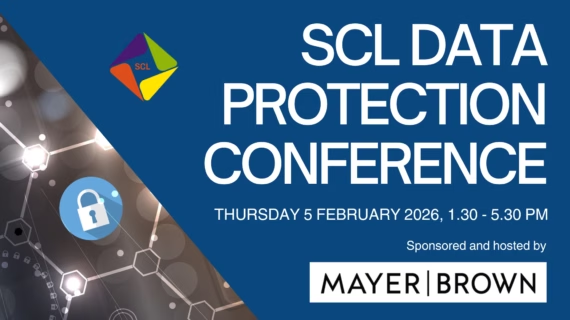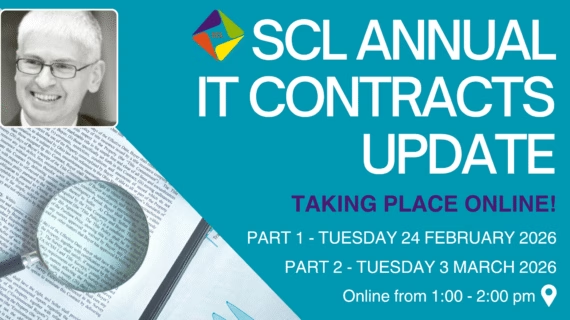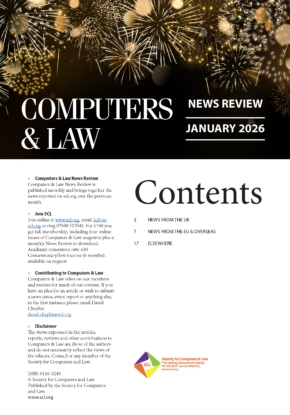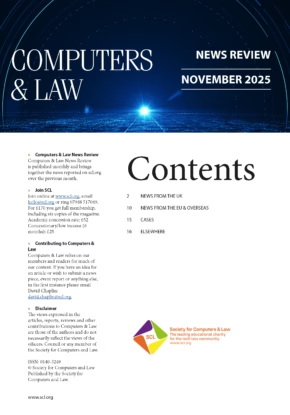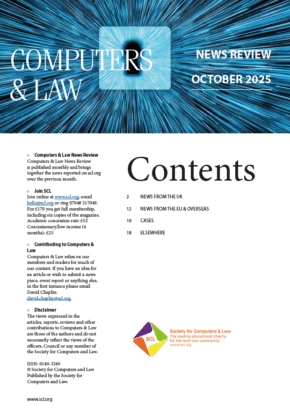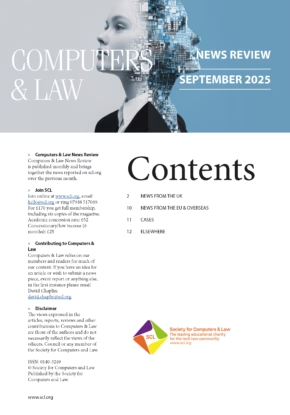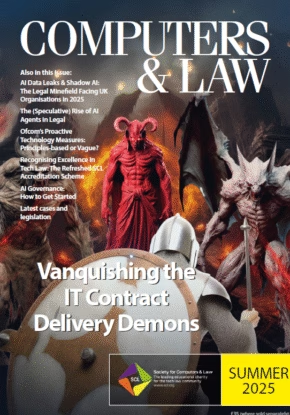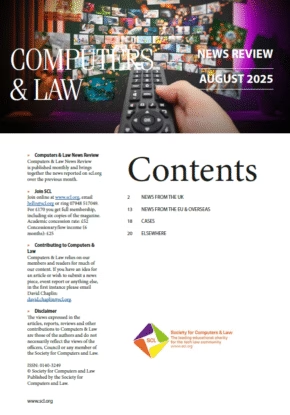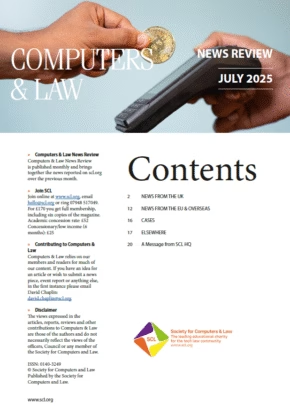Upcoming events
View more >Quantum Technology: Exploring the legal issues, policy and regulator approach, and practical use cases
Data Protection Conference 2026
Contracts Update 2026 Online – Part 1 and 2
Articles
View more >
Analysing Delay for Agile Projects
Methods for delay analysis were largely developed for construction projects. That was fine for IT under waterfall delivery, but the strain is starting to show as agile and other iterative methods dominate. William Hooper asks, what are the implications for your clients’ projects? This article designed for IT lawyers is an abbreviated form of the…

Happy New Year and Brave New World 2026! Banned from the ashes of social media Down Under
Chris Marsden with an acerbic look at the origins and, perhaps unintended, consequences of Australia’s social media ban for under 16’s which comes into force today. I write this on the eve of Australia’s under-16 social media ban, which stops all Australians using social media unless they can prove they are over 16. Unsurprisingly, it…
FRAND forum disputes and interim licences: Samsung v ZTE
Scott Foster summarises the latest Court of Appeal decision in the Samsung / ZTYE FRAND litigation. Does pressing for your preferred court amount to bad faith? The Court of Appeal’s decision in Samsung v ZTE clarifies a live question in SEP/FRAND litigation: when parties are locked in a global forum battle, does pressing for your preferred court…
Read More… from FRAND forum disputes and interim licences: Samsung v ZTE
Training Tomorrow’s Top Guns: AI-Native Law Firms and the New Legal Talent Paradigm
Dan Hunter and Henry Goodwin look at how law firms’ talent mix must evolve as AI goes native. Do we need fighter pilots or drone operators? AI solutions are becoming embedded in the day-to-day ways of working of law firms around the world. Even at this early stage of AI integration, long-held assumptions around the…
Read More… from Training Tomorrow’s Top Guns: AI-Native Law Firms and the New Legal Talent Paradigm
Top AI Resources for the Tech Lawyer
Tom Whittaker and Gabi Commatteo curate the recommendations of AI committee members for where to get to grips with, and keep on top of, developments in AI and the law. You may feel similarly to us – AI is everything, everywhere, all at once. A never-ending amount to listen to, read, and watch. And all evolving…

Levelling the Playing Field in the Age of AI: Why Small Legal Teams Can Win Big
Rory O’Keeffe maps out how lean legal teams can outpace larger rivals, halve turnaround times and unlock real business impact. There’s a persistent myth in legal circles that AI is a game for the big players. Deep pockets, sprawling data lakes and armies of technologists are seen as prerequisites – yet only 54% of legal…
Read More… from Levelling the Playing Field in the Age of AI: Why Small Legal Teams Can Win Big

Notes From the Jagged Frontier: Agentic AI, Coding and the Law
James Phoenix, a litigator, shares insights from a six month sojourn into agentic GenAI software development. Imagine, if you will, a trainee, but a rather unusual one; their output needs careful review and they never show up to meetings but what they are is indefatigable; they don’t get ill and they are ready to work…
Read More… from Notes From the Jagged Frontier: Agentic AI, Coding and the Law
Latest replay
View more >-
Member discount

Public Sector Tech Virtual Conference
£240.00 £120.00 (Member price) -
Member discount

Tech Transactions Masterclass
£360.00 £180.00 (Member price) -
Member discount

AI Law: what every business (and their lawyers) needs to know
£600.00 £300.00 (Member price) -
Member discount
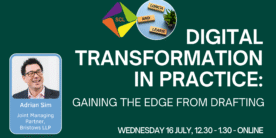
Lunch and Learn 3: Digital Transformation in practice – Gaining the edge from drafting
£84.00 £42.00 (Member price) -
Member discount

Digital Media Masterclass: Copyright and Content in the Digital Age- Legal Insights on GenAI and E-Sports.
£240.00 £120.00 (Member price) -
Member discount

Outsourcing: the current shape of the market
£84.00 £42.00 (Member price) -
Member discount

Consent or Pay Webinar
£84.00 £42.00 (Member price) -
Member discount
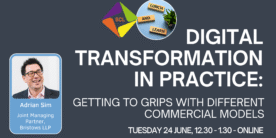
Digital Transformation in practice – getting to grips with different commercial models
£84.00 £42.00 (Member price)

